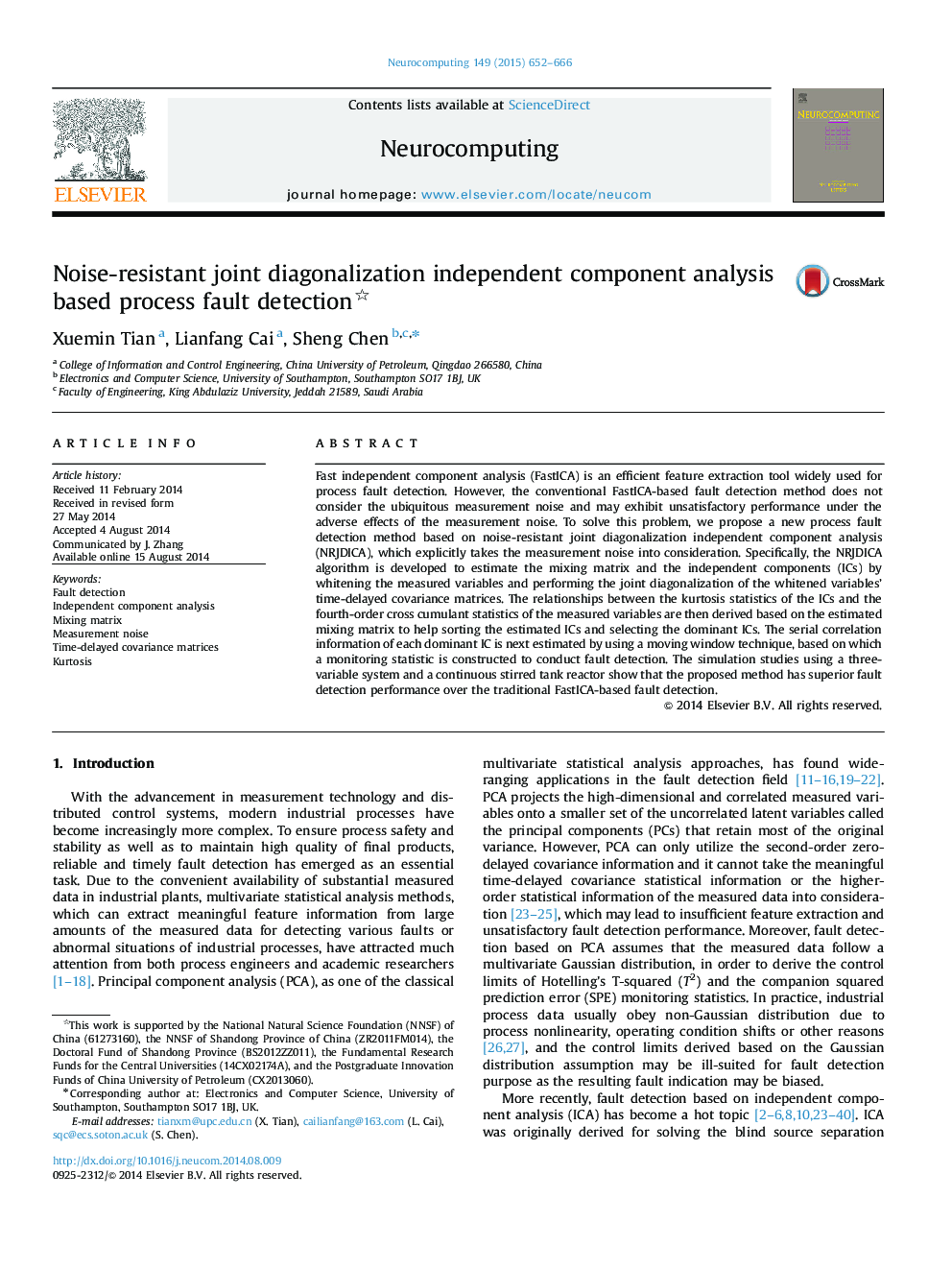| Article ID | Journal | Published Year | Pages | File Type |
|---|---|---|---|---|
| 409768 | Neurocomputing | 2015 | 15 Pages |
•Propose noise-resistant joint diagonalization independent component analysis.•Construct a new noise-restraining monitoring statistic.•This new fault detection method significantly outperforms the existing methods.•Our approach is capable of operating in high-noise industrial environments.
Fast independent component analysis (FastICA) is an efficient feature extraction tool widely used for process fault detection. However, the conventional FastICA-based fault detection method does not consider the ubiquitous measurement noise and may exhibit unsatisfactory performance under the adverse effects of the measurement noise. To solve this problem, we propose a new process fault detection method based on noise-resistant joint diagonalization independent component analysis (NRJDICA), which explicitly takes the measurement noise into consideration. Specifically, the NRJDICA algorithm is developed to estimate the mixing matrix and the independent components (ICs) by whitening the measured variables and performing the joint diagonalization of the whitened variables’ time-delayed covariance matrices. The relationships between the kurtosis statistics of the ICs and the fourth-order cross cumulant statistics of the measured variables are then derived based on the estimated mixing matrix to help sorting the estimated ICs and selecting the dominant ICs. The serial correlation information of each dominant IC is next estimated by using a moving window technique, based on which a monitoring statistic is constructed to conduct fault detection. The simulation studies using a three-variable system and a continuous stirred tank reactor show that the proposed method has superior fault detection performance over the traditional FastICA-based fault detection.
